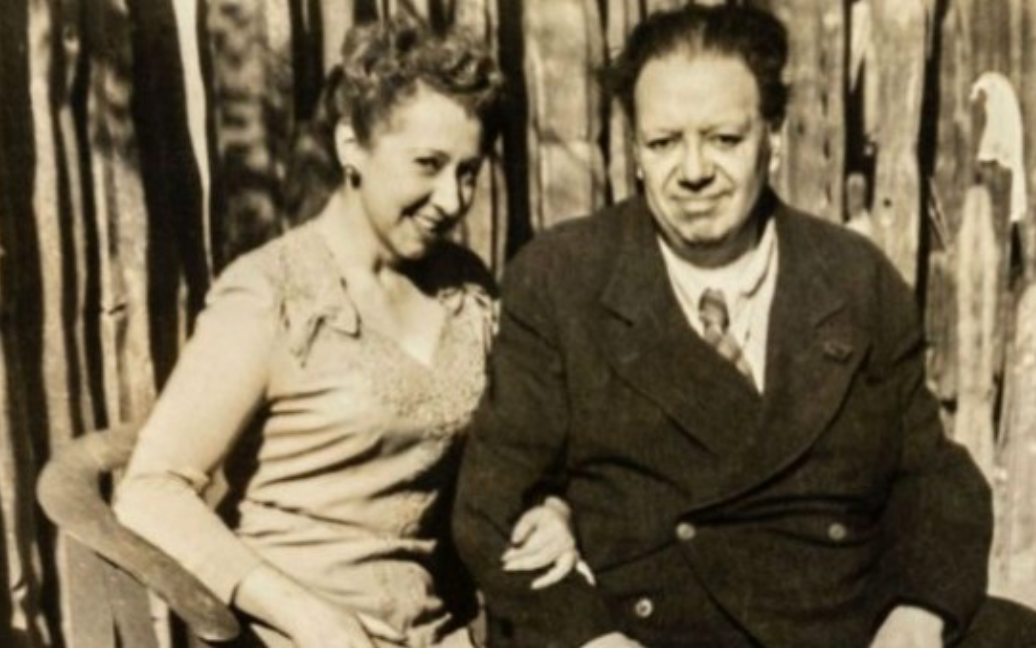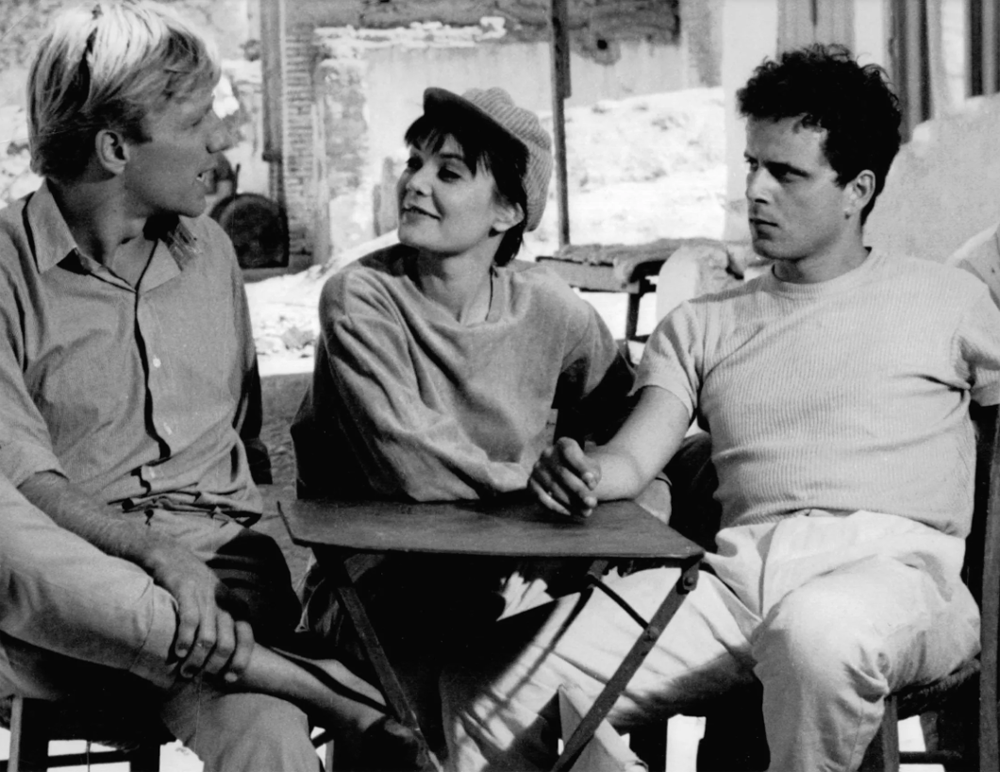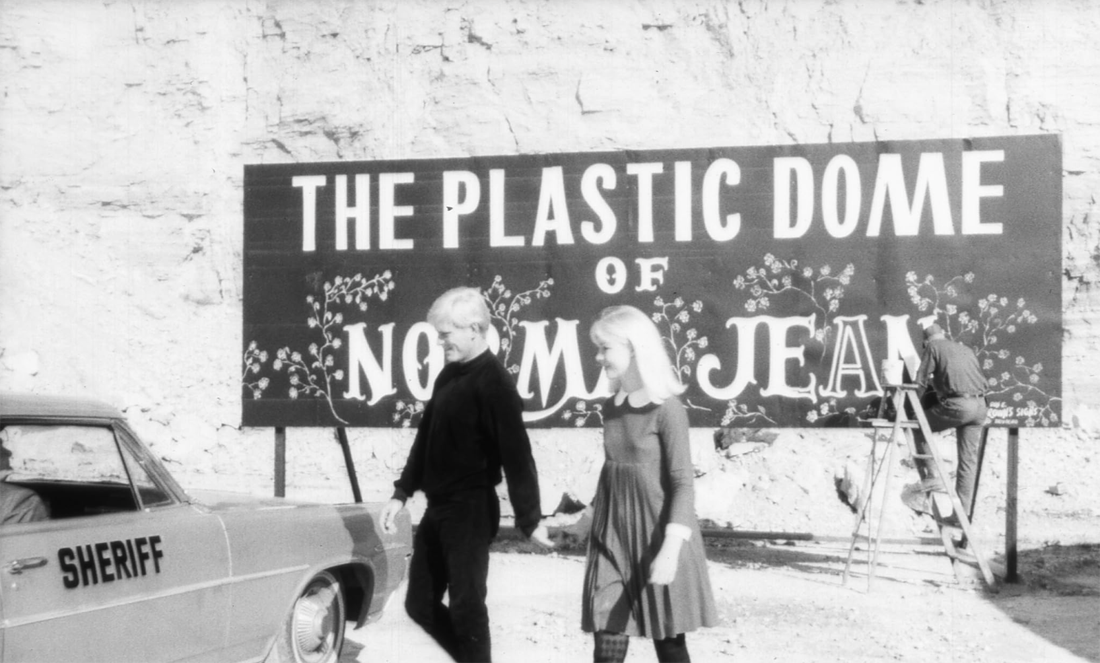
Emma Hurtado and Diego Rivera
*
October 15, 2023
by Philip Gambone
On a trip last winter to Mexico City, I spent the better part of an afternoon at the Museo de Arte Moderno (Museum of Modern Art). One area of this beautiful museum was hosting a special exhibition entitled "Memorias de un Retrato: Emma Hurtado y Diego Rivera" (Memories of a Portrait: Emma Hurtado and Diego Rivera). Hurtado had a close professional and emotional relationship with Rivera, and the show displays some of her archive of photos, paintings, and other documents related to the years 1945-1957, when she was Rivera's patron, art dealer, and, in the final years of the artist's life, his fourth wife.
Earlier that week, my friends and I had made it a point to visit several of the murals that Rivera painted in the capital—murals that justly establish him as one of the three great Mexican muralistas. But Rivera's artistic output extends well beyond those magnificent wall paintings. The Hurtado-Rivera show at the museum opened my eyes to Rivera's astonishing virtuosity and prolificacy. He was a chameleon artist, equally adept in a variety of styles, and though he was a member of the Communist Party, he seems to have had no quarrel with taking commissions—as did John Singer Sargent—to paint what today we might call "society portraits."

Rivera's portrait of Juleen Compton
*
One such portrait in the show particularly intrigued me. Painted in 1956, a year before Rivera died, it is a sumptuous picture of Juleen Compton, who was later to become a talented independent film director, screen writer, and actor. In her early twenties when she sat for the portrait, Compton lounges in a garden chair, dressed in nothing but a bright red robe. Rivera brought out all Compton's youthful (and androgynous) beauty, her sexy allure, and, I think, her wariness as she poses for the 70-year-old artist, who was known for his womanizing.
Compton, who is now in her early 90s, is best known for two avant-garde films that she wrote, directed, and produced. The first was the autobiographical "Stranded" (1965), in which she also played the lead character, Raina, a woman who unabashedly goes after personal and sexual freedom. In his 2019 New Yorker profile of Compton, Richard Brody called the film "an exemplary expression of cinematic modernism."

From the film Standed
*
Compton, he went on to say, proved herself to be "a directorial stylist of the first order, blending melodrama, comedy, and a complex spectrum of emotions in starkly composed and richly textured images, with highly expressive angles and tensely isolated gestures. Her script is filled with sharp moments of aphoristic insight and powerful yet fleeting emotional spikes—and her own extraordinary performance is one of her prime inventions." He likened her blend of the comedic and the dramatic to the work of Jean Seberg, Shirley MacLaine, and Judy Garland.

From the film Stranded
*
Compton's other major film, "The Plastic Dome of Norma Jean" (1966), is about a naïve teenager in the Ozarks, who, with her boyfriend, embarks on a wild and foolish business venture to capitalize on her gift of clairvoyance. Brody compared it to Michelangelo Antonioni's "Blow-Up," adding that she had done "a better job of reflecting the eerie chill of media-centric and technologically governed modernity—and reflects all the more clearly the central place, and victimhood, of female genius in the creation of modernity."
Equally appreciative was Robert Colaciello, who, in reviewing "The Plastic Dome of Norma Jean" for The Village Voice, likened the film to Fellini's "La Strada," noting that Compton's film was "an enchanting fantasy, set within a realistic, even banal, context." He particularly praised her "admirably restrained manner."

From the film The Plastic Dome of Norma Jean
*
Compton made one more feature film, "Buckeye and Blue" (1988), a Western about the female leader of a gang of train robbers. She also wrote a made-for-TV movie, Virginia Hill (1974), and co-wrote the TV drama Women at West Point (1979).
While she had not yet been recognized for her cinematic talents when Rivera painted her, Juleen Compton clearly saw herself as someone worth the artist's time and attention. In fact, for a few months, she lived together with him and Hurtado at Rancho Los Coscomates.
Rivera certainly lavished a lot of attention on "Retrato de Juleen Compton," one of 56 paintings he did in 1956. The canvas is alive with sensuality: the tiger-stripe covering that drapes the lounge chair; the jungle of Mexican foliage in the background that seems to lurk menacingly, ready to envelop the young woman; her bare legs (almost a Rivera fetish in his society portraits); and the long, dark eyebrows raised in an enigmatic arch.

Compton in 2019 with Rivera's portrait of her
*
Compton loved the painting, which she kept, along with a bust of herself by the sculptor Jacob Epstein, throughout her many moves from one residence to another. Four years ago, she and her husband, Nicholas Wentworth, gave the portrait to the Museo Nacional de Arte (National Museum of Art). That museum lent it to the Museo de Arte Moderno for the Hurtado-Rivera show.
In accepting the painting, Carmen Gaitán, director of the Museo Nacional, noted, "Diego was aware that he would die soon. Juleen was waking up to life, and he was already in the twilight of his. This work of excellent workmanship and quality; it is a hymn to life."

Juleen Compton
*
It pleased me to read these words, because many art historians point to Rivera's final years as a falling-off period. Indeed, one of his major biographers, Bertram Wolfe, wrote that in the last six years of his life Rivera painted "scarcely anything worth noting." But the portrait of Juleen Compton (there is a second one, too, a nude, that is in a private collection) belies that commonplace notion. The painting exudes youthful vitality, technical finesse, and outright sexiness.
Toward the end of his life, Rivera told Gladys March, to whom he was dictating stories and reflections for his autobiography, "Looking back on my work today, I think the best I have done grew out of things deeply felt, the worst from pride in mere talent." The stunning portrait of Juleen Compton, despite its aura of celebrity glamor, strikes me as a painting that came from Rivera's deeply felt passion for beautiful and talented women—and for life.

Compton during a 2019 interview
*
**************

Philip Gambone, a retired high school English teacher, also taught creative and expository writing at Harvard for twenty-eight years. He is the author of five books, most recently As Far As I Can Tell: Finding My Father in World War II, which was named one of the Best Books of 2020 by the Boston Globe. It is available through Amazon, at the Biblioteca bookshop, and at Aurora Books off the Calzada de la Aurora.
**************
*****
Please contribute to Lokkal,
SMA's online collective:
 ***
***
Discover Lokkal:
Watch the two-minute video below.
Then, just below that, scroll down SMA's Community Wall.
Mission

Visit SMA's Social Network
Contact / Contactar

